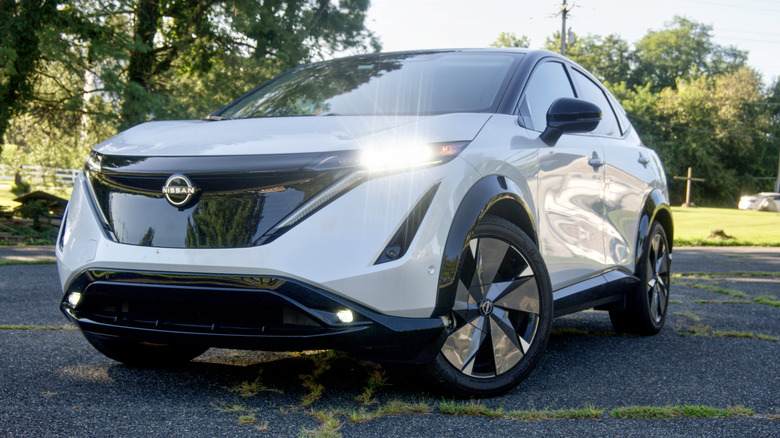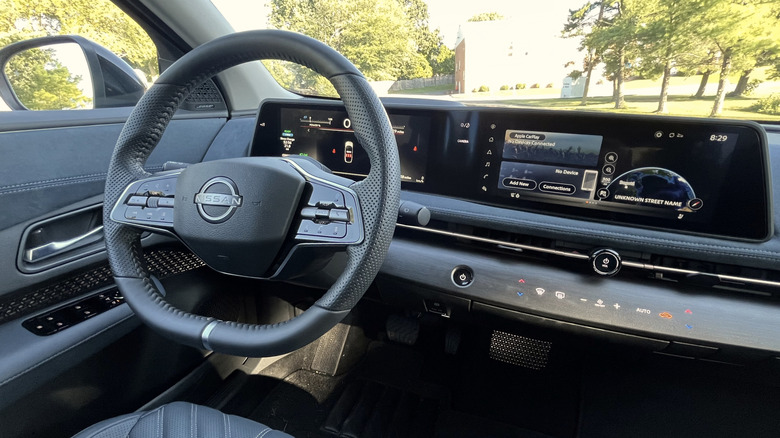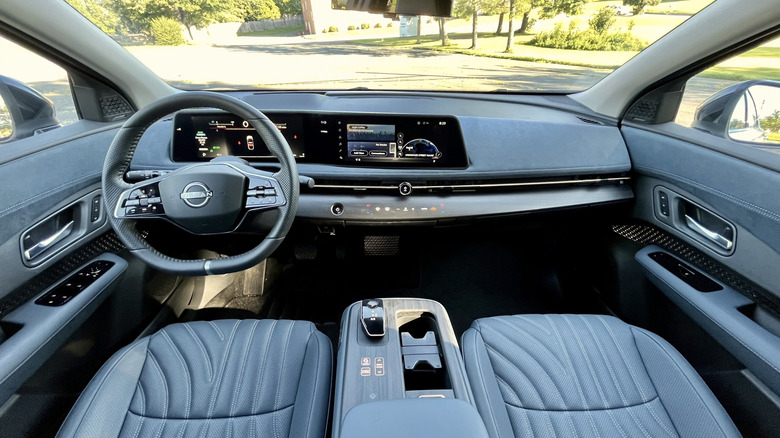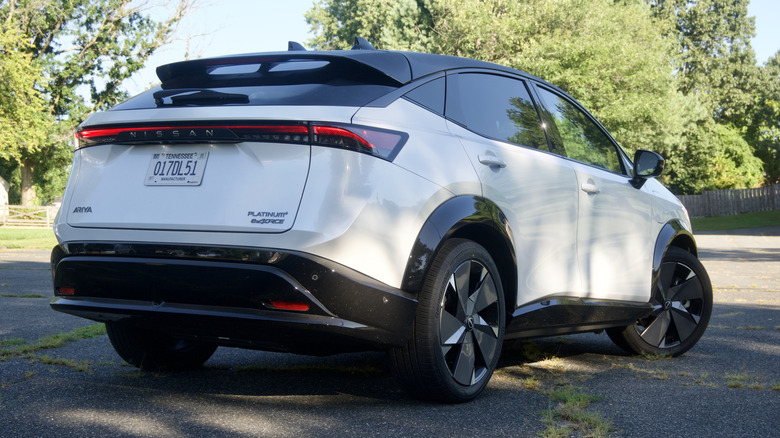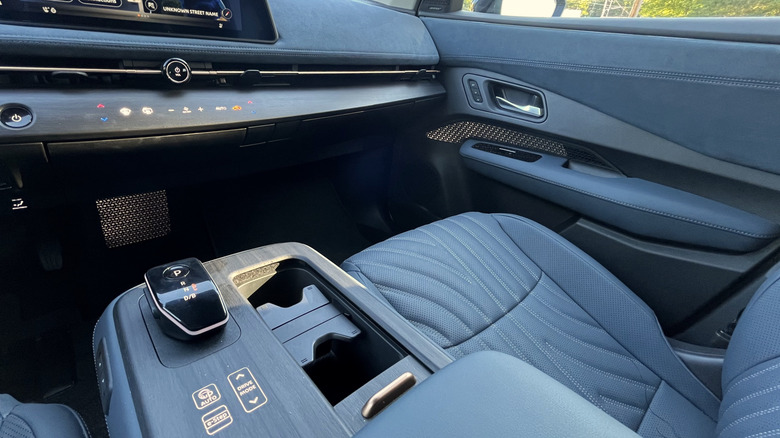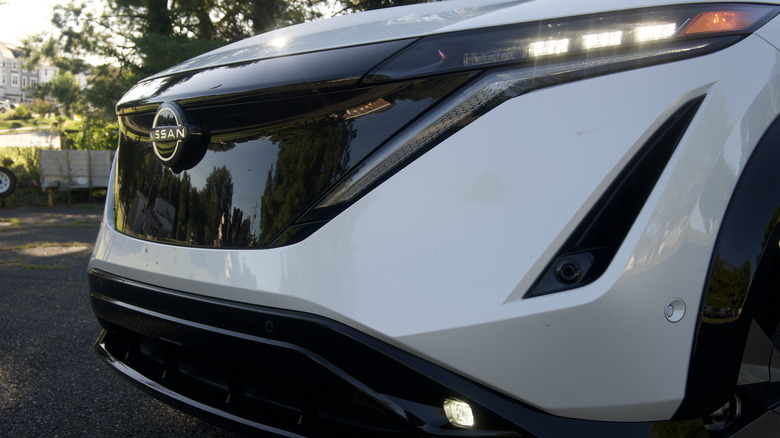Nissan Has Given Up On Ariya, But Is This Electric Crossover Worth Considering?
I feel like every time I review a Nissan, I come to the same conclusion: It has the potential to be a great car, yet is bogged down by a glaring deficiency. The 2025 Nissan Altima is priced right, and comes standard with a lot of bells and whistles; you can even option it with all-wheel drive. However, it's held back by mediocre fuel efficiency and an outright boring drivetrain. The 2026 Infiniti QX60 is incredibly comfortable to drive and the interior is class-leading. However, it's too expensive over a Nissan Pathfinder, and its engine is lackluster to put it generously.
The 2025 Nissan Ariya that just left my driveway fell into the same pitfall, unfortunately. When I reviewed the 2024 Ariya last year and wasn't particularly impressed, I put a lot of that dissatisfaction down to the fact that I didn't live near a place where I could quickly charge. Availability of infrastructure is, the research keeps showing, one of the biggest contributing factors to EV satisfaction. Now, living in a suburb of Baltimore, I have plenty of places to charge, so I thought it was high time I give the Ariya another shot.
What's new and what's old
In that last review I used a lot of marine mammal terminology to describe the Ariya, and my perspective still stands. The 2025 Ariya that arrived may have been finished in a color that Nissan calls "Everest White," but — while the automaker's ability to offer a striking paint color remains one of its biggest strengths — the EV still looks like a beluga whale. As far as differences between this Ariya for 2025, and the Ariya from last year, Nissan's summary of the differences is admirably brief: "Wireless phone charging is now standard on all Ariya grades." There you have it.
This particular Ariya is the Platinum+ Dual Motor e-4orce model — "e-4orce" being Nissan-speak for dual-motor all-wheel drive — meaning it sits at the very top of the range. Collectively, its motors pump out 389 horsepower and 442 pound-feet of torque through the assistance of a 91 kilowatt-hour battery. Nissan says that will get you around 267 miles of range on a full battery. Over the course of the week, I found that number to be pretty accurate.
Two beasts in one car
Driving the Ariya, it seemed to be two beasts in one car. On one hand, it was a futuristic tech cocoon with a beefy amount of power available that could whisk me away to my destination without the motors making hardly a sound. On the other hand, it was a wind-noise filled inconveniently laid-out rattling barge that, despite costing almost $60,000, felt cheap with a lot of squeaks and rattles conducting their own cacophony while driving. In particular, the side view mirrors vibrated wildly when going at highway speeds. It was quick, to be sure, but it wasn't all that nice to drive.
The interior was another Dr. Jekyll and Mr. Hyde situation. It looks nice, but when you actually use it, the illusion falls apart. It's entirely function over form in the way that there isn't anywhere to put anything apart from your phone. All of the cubby holes you would expect in a modern SUV-shaped object are either nonexistent on the Ariya, or too awkwardly placed or small to use with any regularity. The one saving grace of the interior was the infotainment system. I seem to be in a constant war with technology but can gladly say that the Ariya's infotainment system didn't give me any grief.
Trying too hard
For all that Nissan deserves credit for attempting more interesting styling, the Ariya's cabin forgets why people buy crossovers. The interior of something like a Ford Maverick isn't fantastic, but it isn't trying all that hard. It's meeting a price point. The Ariya is trying very hard to be interesting and notable and it succeeds in getting attention, only to fail at everything else when you actually sit behind the wheel. I would have been happier with a more bare-bones interior that was still more practical, which feels like table-stakes for a nearly $60,000 EV.
Charging the car wasn't much of a hassle, at least. I live near an Electrify America station that offers 150 kW DC fast chargers and I was able to sit and charge with no fear of running out of battery. 260-ish miles isn't a lot in comparison to just about every other EV on the market, but it's certainly enough to run errands and go around town. Is it a good deal? No, but does it work? Yes.
Premium pricing in a segment known for bargains
The Ariya, in its base form, is relatively competitive with the segment, starting at $39,770 (plus $1,495 destination). The Platinum+ e-4orce model cranks that up through the addition of all-wheel drive, leather seats, heated and ventilated front seats, Nissan's ProPilot driver assistance tech, and a Bose sound-system for good measure; it's priced at $54,370.
The only optional extra I had was the two-tone Everest White/Black Diamond paint scheme priced at a cool $1,000. Add in the destination charge and you end up at the $56,865. That's a lot of money for a car that has less range than the Tesla Model Y, Ford Mach-E, or Chevy Equinox EV (all three of which are less expensive, too).
Unless you're sticking to the most basic models. then, Nissan Ariya just isn't a very good deal. It's too weird on the inside to be entirely practical, too expensive to be a secondary occasional around town car, and the range struggles to be competitive in a world where nearly every EV in its class exceeds 300 miles with no issue.
2025 Nissan Ariya verdict
If you've been keeping up to date on car news, you may very well be yelling at your screen right now, telling me that I forgot to mention a crucial fact about the Ariya. Nissan is pausing production of the car; it is, for the U.S. at least, functionally dead, and won't be returning for the 2026 model year. I save this fact until the closing remarks of this review because, while important, the EV still has to speak for itself. "Future classic" propositions shouldn't affect a car's ability to sell to someone who just wants a good EV.
So, before it fades into the wild blue yonder of automotive history, is the Nissan Ariya worth buying? I would argue that it is not. If you absolutely need a Nissan EV, the Leaf has been there all along with more range for less cash; the entirely new 2026 Leaf is even more impressive. If you just want an electric car for low-cost, convenient driving, there are dozens of options out there that don't involve buying a model range on its last legs.
